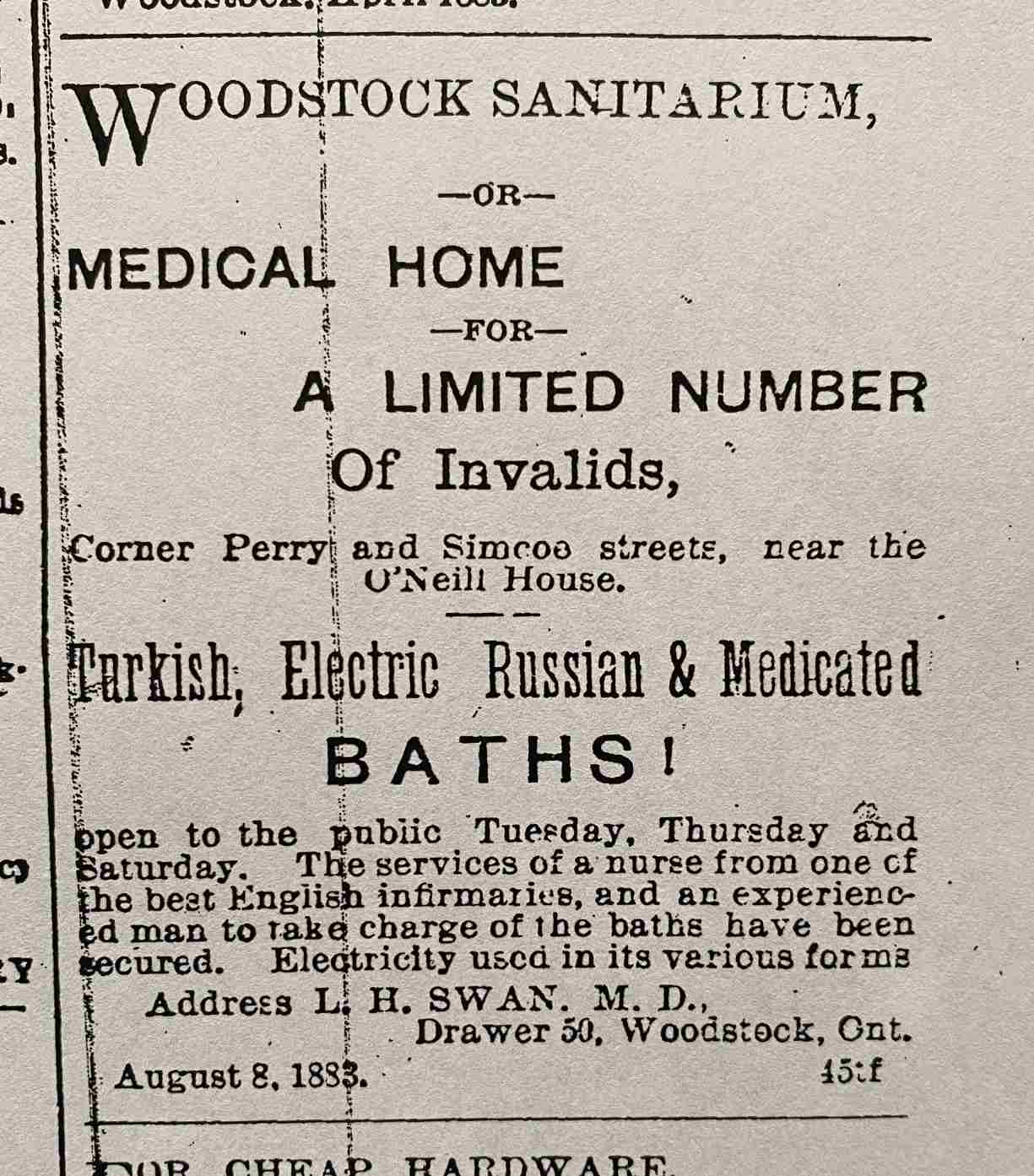The Woodstock Sanitarium
The Woodstock Sanitarium
The history of baths and healing - the Woodstock Sanitarium's "full system of Turkish, Russian, electric, and medicated baths".
By Liz Dommasch, Archivist
While searching through newspaper microfilm the other week, I came across a large advertisement for the Woodstock Sanitarium in 1883. Located on the corner of Perry and Simcoe Streets, and operated by L.H. Swan, M.D., the Woodstock Sanitarium contained a full system of Turkish, Russian, electric, and medical baths for residents and the general public (the Sanitarium was open to the public Tuesday, Thursday and Saturday).
The Turkish baths consisted of a full suite of rooms as well as a combination of hot and cold water baths, with massage or friction. At the time it was believed that soaking in a Turkish bath could treat all sorts of ailments from gout, rheumatism, paralysis, and dropsy to chronic bronchitis and even diseases of the kidney and liver. The advertisement event boasted that a nurse from one of the best English infirmaries and an experienced man to take charge of the baths had been secured.
Electric baths were a medical treatment from the 1800s in which a high-voltage electrical apparatus was used for electrifying patients by causing an electric charge to build up in their bodies. The electric bath treatment was considered painless, but it caused the patient to become warm and sweaty, and the heart rate to increase. It was believed to cure a wide variety of diseases and prolong life. By the turn of the century, the procedure lost much of its medical credibility and was considered a remedy practiced mostly by “quacks” and “charlatans”. However, in 1883, such practices were considered useful “when there is a condition of torpidity (listlessness), congestion, or blood poisoning”.
treatment was considered painless, but it caused the patient to become warm and sweaty, and the heart rate to increase. It was believed to cure a wide variety of diseases and prolong life. By the turn of the century, the procedure lost much of its medical credibility and was considered a remedy practiced mostly by “quacks” and “charlatans”. However, in 1883, such practices were considered useful “when there is a condition of torpidity (listlessness), congestion, or blood poisoning”.
Alongside the Turkish and electric baths, the Sanitarium provided inhalation and antiseptic air for throat and lung diseases as well as a dietary menu “arranged with a view to health more than pleasure”.
Little is known about the success of the Woodstock Sanitarium, though sadly Dr. L.H. Swan was killed in the St. George train disaster in 1889 (see our blog post for further information on the train disaster) and it is assumed the Sanitarium closed its doors following his death.
Imaged credits:
Woodstock Sentinel-Review, 1883.
